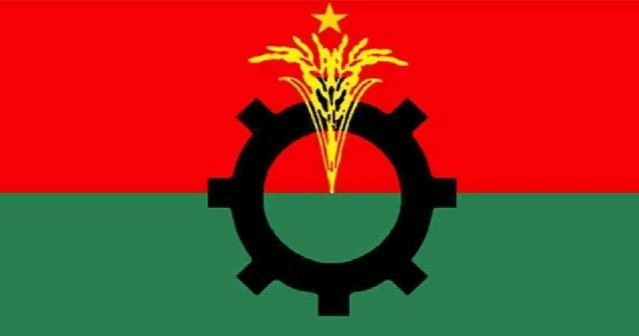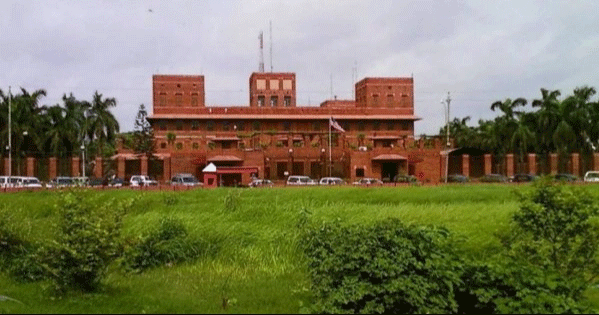Half of foreign aid will spend for interest pay
Zarif Mahmud: Foreign loan assistance provides a large part of Bangladesh’s development expenditure. The government’s expenditure on interest and principal repayment of this loan is now gradually increasing. According to the Economic Relations Department (ERD), various countries and donor agencies have waived $ 5.63 billion in the first three quarters (July-March) of the current financial year (2023-24) in favor of Bangladesh. At this time, the government had to pay the interest and principal of foreign loans to the tune of $257.15 million. As such, in the first nine months of the financial year, nearly half (about 46 percent) of the amount waived as a loan in favor of Bangladesh was spent on repayment of loan interest.
Economists believe that the pressure of foreign debt repayment will increase in the coming days. Their statement in this regard is that the repayment of loan installments taken for several mega projects will begin. Even then, loan repayments and vice versa interest-principal payments may come close.
Earlier, in the same period (July-March) in the financial year 2022-23, the country’s foreign debt was waived to the tune of $536.30 million. And at that time debt repayment (principal and interest) cost $173.03 crore, which is 32.26 percent of the discounted amount.
According to ERD data, in the first three quarters of 2022-23, the rate at which external debt disbursements increased was much faster than the rate at which interest and principal repayments of debt increased.
In the first nine months of the current financial year, the amount of interest paid is $105.49 million. Total interest paid during the same period of FY 2022-23 was $48.59 million. In the first nine months of the current financial year, more than $151.66 million have been paid as original or original loan amount, which is about $1244.5 million in the same period of the last financial year.
Expenditure on import liabilities and debt repayment is more than foreign exchange earnings including remittances and exports in the country. As a result, the foreign exchange reserves are not able to overcome the downward trend. According to the updated data of Bangladesh Bank till last Thursday, the country’s foreign currency gross reserve is now $25.27 billion. However, according to international standards or BPM6 method, the reserves in the country are now $19.82 billion.
The pressure of repayment of loans taken for development projects in various sectors has increased continuously in the last few years. Experts fear that this pressure will become much stronger once the debt repayment of mega projects like Rooppur Nuclear Power Plant, Matarbari Thermal Power Project, Metrorail and Karnaphuli Tunnel starts. So far in the history of the country, the largest foreign debt has been taken mostly in the power and energy sector. Among these, the largest loan was taken for the construction of Rooppur Nuclear Power Plant. There is a loan financing agreement of $12.65 billion from Russia for this project. The repayment of this loan is scheduled to start from March 2027. However, after an inter-ministerial meeting last March, the ERD formally requested Russia to postpone the loan installments by two years to March 2029.
The government has taken loans from the IMF to secure foreign exchange to repay its foreign debt. Bangladesh has already received the second installment of this loan of $473 million. A delegation of the IMF mission has recently visited Bangladesh to disburse the third tranche. The organization is urging Bangladesh to reform in various sectors to give loans. As part of this reform, the organization advised the government to be stricter in revenue collection by removing subsidies for electricity and energy sector in the country, returning defaulted loans to banks, and introducing the crawling peg system.
Mostafizur Rahman, Special Fellow of Center for Policy Dialogue (CPD) said, “The maturity period of loans of several big projects in the country is starting. Interest-principal repayment has started on these. It is increasing gradually. Will increase in the future. On the one hand reserves are decreasing, on the other hand interest-principal payments are increasing. If it was not like this, maybe we would have seen a different picture in our economy today.
He also said, ‘The loans with which we are implementing the project are being paid by selling our services, selling electricity, gas and even collecting highway tolls. The increase in currency exchange rate is also one of the reasons behind the increase in cost here. Good governance is necessary to get out of it. Cost-effective projects that can be economically profitable should be taken, so as not to get under the pressure of bigger debt in the future. Besides, efforts should be made to increase the reserve through remittance and export.
A large part of the country’s development infrastructure is being implemented with foreign aid. Various projects are being implemented subject to receiving these support. The main annual development program (ADP) size for the financial year 2022-23 was Tk 2 lakh 63 thousand crore. After deduction due to inability to spend the money, the size of ADP stands at Tk 2 lakh 45 thousand crores. Out of this, the foreign loan target was Tk 94 thousand crores. In the revised ADP, the foreign debt also decreased to Tk 83,500 crores. In the upcoming fiscal year 2024-25 ADP or development budget, the foreign borrowing target has been set at Tk 1 lakh crore, which is the highest in history.
Economists have blamed the slow pace of project implementation for non-remission of foreign debt in the country. According to them, a large part of the foreign pledged loans comes around the project. As a result, there is a need for structural reforms.
According to ERD data, in the third quarter of the current fiscal year, the largest number of loan commitments to Bangladesh came from the World Bank, Asian Development Bank (ADB) and Japan. Of this, the World Bank has promised a loan of $2.62 billion. Discounted $140.27 million. ADB has pledged $1.418 billion in loans. Discounted $96.73 million. Japan’s pledged and discounted amounts are $203.59 million and $135.8 million, respectively. No loan commitments were received from China at this time.
MA Mannan, Chairman of the Parliamentary Standing Committee on Planning Ministry said few days ago, “We hope that not only loans are ahead; Income will also increase. The economy is expanding, growing. The amount of income will also increase. We have invested a lot in the infrastructure sector and expect a lot of returns from that, some are coming. But one thing is that we are borrowing in dollars, but earning in rupees. Now we need to increase our income in dollars. It means that the income should be increased by diversifying the exports. Besides, the amount of remittance should also be increased.
President Joe Biden tests positive for COVID-19 while campaigning in Las Vegas, has ‘mild symptoms’
International Desk: President Joe Biden tested positive for COVID-19 while traveling Wedne…








